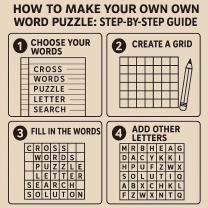Should you use a Truck Simulator for CDL training?
Good question — truck driving simulators are increasingly used in CDL (Commercial Driver’s License) training, but they come with both advantages and limitations. Here’s a clear breakdown:
Pros of Using a Truck Simulator for CDL Training
Safe Learning Environment
Practice shifting, braking, and maneuvering without risking accidents.
Ideal for beginners who are nervous about handling a large truck.
Cost-Effective
Reduces wear and tear on actual trucks.
Saves on fuel and maintenance costs.
Exposure to Rare/Dangerous Scenarios
Simulate driving in snow, rain, fog, steep hills, or emergency situations that can’t always be safely practiced on real roads.
Instant Feedback
Many simulators track errors (e.g., missed gears, braking too late, lane drifting) and provide detailed feedback.
Flexible Practice
Available regardless of weather or location.
Students can repeat difficult maneuvers (like backing or coupling) as many times as needed.
Environmentally Friendly
Reduces emissions compared to training exclusively with trucks.
Cons of Using a Truck Simulator
Not a Full Substitute for Real Driving
No simulator can fully replicate the weight, vibration, and road feel of an 18-wheeler.
Real-life traffic, blind spots, and unpredictable drivers can’t be 100% simulated.
Potential Over-Reliance
Students who spend too much time in simulators may struggle to transition to real trucks.
Limited Availability of High-Quality Simulators
Advanced simulators are expensive; some training centers may only have basic versions with limited realism.
May Not Meet State CDL Requirements
The FMCSA (Federal Motor Carrier Safety Administration) allows simulators for some training, but behind-the-wheel hours in a real truck are mandatory for CDL licensing.
Different Learning Curve
Simulators often use screens or VR, which may feel “game-like” and not as serious to some learners.
Bottom Line
Yes, use a truck simulator as a supplementary tool for CDL training.
It’s excellent for building confidence, practicing maneuvers, and preparing for tricky scenarios.
But it should never replace actual behind-the-wheel training, which is essential for passing the CDL road test and for real-world driving experience.
Many truck schools use a blended approach: simulator training first (to build skills safely) → then transition to real trucks.
Here’s a comparison table to show the strengths and limitations of Truck Simulator vs. Real Truck Training for CDL preparation:
Truck Simulator vs. Real Truck Training
| Aspect | Truck Simulator Training | Real Truck Training |
|---|---|---|
| Safety | 100% safe environment – no risk of accidents. | Real-world risk; requires instructor supervision. |
| Cost | Lower (no fuel, maintenance, or wear on trucks). | Higher (fuel, maintenance, insurance costs). |
| Learning Environment | Controlled – practice bad weather, emergencies, night driving, etc. | Uncontrolled – exposure to real traffic, weather, and unpredictable drivers. |
| Repetition & Practice | Unlimited retries for backing, shifting, coupling, etc. | Limited by time, fuel, and road conditions. |
| Realism | Good for visuals and controls, but lacks physical “feel” of truck weight and road feedback. | Full realism – students feel truck handling, vibration, blind spots, and road stress. |
| Confidence Building | Great for beginners to reduce anxiety before driving a real truck. | Builds confidence in real-world conditions; essential for CDL test readiness. |
| Feedback | Immediate, detailed reports on mistakes (gear shifts, braking, lane discipline). | Instructor-led feedback; less data-driven but based on real experience. |
| Regulatory Requirements | Useful supplement; some hours may count toward training. | Mandatory – behind-the-wheel time is required for CDL licensing. |
Conclusion:
Simulators = Best for early practice and scenario training.
Real trucks = Absolutely necessary for CDL exam and real job readiness.
The ideal CDL program uses both: simulators for safe skill-building plus real truck time for hands-on experience.
Truck Simulators and CDL Training: An Overview
Truck simulators have become an increasingly popular tool in commercial driver's license (CDL) training programs. They offer a safe, controlled environment for students to learn fundamental skills and practice a wide range of scenarios without the risks and costs of real-world driving.
How effective are truck simulators for CDL training?
Truck simulators are highly effective, particularly for new and inexperienced drivers. They provide a realistic, immersive experience that mimics the feel of a real truck, including its movements, vibrations, and authentic controls. Studies have shown that simulator training can be as good as or even better than traditional behind-the-wheel (BTW) training for specific skills, and some research suggests that one hour in a simulator can be equivalent to several hours on the road.
Simulators are especially beneficial for:
Risk-free learning: Recruits can make mistakes, such as a missed shift or a hard brake, without the potential for costly accidents or injuries.
Repetition and mastery: They allow for repetitive practice of difficult maneuvers, like backing up, parallel parking, and turning, helping to build muscle memory and confidence.
Cost efficiency: Simulators save on fuel, vehicle maintenance, and the costs associated with real-world incidents.
What are the pros and cons of using a truck simulator for CDL training?
Pros:
Safety: The most significant advantage is the ability to practice dangerous and high-risk scenarios, such as driving in severe weather (snow, ice, fog), handling a tire blowout, or responding to a sudden mechanical failure, in a completely safe environment.
Accelerated Learning: Simulators allow students to learn basic skills, like shifting a manual transmission, at a much faster rate.
Objective Assessment: Instructors can use the simulator's data and feedback tools to objectively measure a student's performance, identify areas for improvement, and create customized training plans.
Flexibility: Simulators can replicate various road types (urban, rural, mountainous), traffic conditions, and times of day, providing a diverse training experience.
Cons:
Cannot Fully Replicate Reality: While advanced, a simulator cannot perfectly mimic the physical sensations of driving a real truck, such as the "seat-of-the-pants" feel, the forces involved in braking, or the nuances of road conditions.
Limited Scope: Simulators cannot train students on all aspects of the job, such as hooking up a trailer, performing a pre-trip inspection, or dealing with the psychological stress of real traffic.
Can a truck simulator replace on-the-road training?
No, a truck simulator cannot replace mandatory on-the-road (BTW) training. According to the Federal Motor Carrier Safety Administration (FMCSA), simulators are not a substitute for the required BTW training. While simulators are an excellent tool for reinforcing skills and preparing students for the road, real-world, hands-on experience in a live vehicle is a mandatory component of CDL training.
What skills can you learn from a truck simulator?
Truck simulators are effective for teaching and honing a wide range of skills, including:
Basic Vehicle Control: Mastering shifting, clutch control, and proper braking techniques.
Maneuvering: Practicing challenging maneuvers like parallel parking, alley docking, and turning in tight spaces.
Defensive Driving: Developing hazard perception and learning how to respond to unexpected scenarios, such as a distracted driver or a pedestrian stepping into the road.
Weather and Road Conditions: Safely experiencing how a truck handles in different weather conditions and on various terrains.
Fuel Efficiency: Learning techniques for "eco-driving," which can help reduce fuel consumption.
Where can I find truck simulator software for training?
The most effective truck simulator software for CDL training is part of a complete, high-tech hardware and software package used by professional driving schools and trucking companies. These are not typically consumer products. Companies like L3Harris (TranSim™), Virage Simulation, and Tecknotrove develop and sell these advanced systems.
While consumer-grade games like American Truck Simulator and Euro Truck Simulator 2 can help with spatial awareness and getting a general feel for a truck, they are not designed for professional training and do not provide the in-depth, measurable feedback needed for CDL certification.













